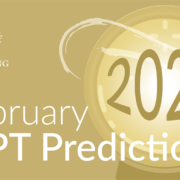6 Actionable Steps To Raise Your MEE Score
6 Actionable Steps To Raise Your MEE Score
The Multistate Essay Exam (MEE) is an important part of the Uniform Bar Exam (UBE). Even in states that don’t administer the UBE, essay portions of the bar exam constitute a significant percentage of the total points. Learn more about MEE scoring here. For these reasons, mastering the MEE is a vital step toward raising your overall bar exam score. In this post, we explore six actionable steps to raise your MEE score!
6 Actionable Steps To Raise Your MEE Score
Before diving into MEE practice, it’s important for students to understand what they are being tested. According to the National Conference of Bar Examiners (NCBE), the MEE’s purpose is to test the examinee’s ability to:
- identify legal issues;
- identify relevant facts;
- “present a reasoned analysis of the relevant issues in a clear, concise, and well-organized composition”; and
- exhibit a knowledge of the relevant law.
The NCBE further explains that the “primary distinction between the MEE and the Multistate Bar Examination (MBE) is that the MEE requires the examinee to demonstrate an ability to communicate effectively in writing.”
With that in mind, let’s turn to how you can master the MEE!
1. Identify The Subject Being Tested
To answer an MEE question, you first have to identify the body of law being tested. Doing so is usually pretty simple. For example, a property question will deal with issues such as easements, recording, and leases. Likewise, a contracts question may contain buyers, sellers, and well, contracts. Identifying the body of law being tested is just the first step in identifying the legal issues. Keep in mind that the MEE sometimes tests more than one body of law in a single question. However, even if a question tests more than one body of law, one will be the primary body of law and the other will be secondary.
2. Focus on Sub-topics Too
Once you have identified the body of law being tested, focus on the subtopics within that issue. If the question is a contracts question, you need to determine which part of contracts is being tested. For example, many contracts questions deal with contract formation. However, if the fact pattern states that the parties formed a valid contract, then the questions may be asking about something else, such as contract modification or the Statute of Frauds. It is important to identify the subtopics early in the writing process so you don’t waste time writing rules for and analyzing subtopics that aren’t being tested.
Identifying the legal issues being tested and the exact sub-topic are two of the actionable steps to raise your MEE score.
3. Identify The Relevant Facts
Once you have identified the body of law and the subtopics being tested, move on to identifying the relevant facts. If the subtopic is contract formation, include facts that relate to offer, acceptance, and consideration. However, if the subtopic is the Statute of Frauds, focus on facts that relate to a writing that must be signed by the party to be charged. To help you find the relevant facts, look back to the elements who wrote in your rule section of your IRAC. Then identify the facts that relate to those elements.
4. Present A Reasoned Analysis
Now that you have identified the body of law and its subtopics, and identified the relevant facts, it is time to put those two together. A reasoned analysis consists of applying the applicable law to the relevant facts. That sounds pretty straightforward, but how does that actually work in practice?
Examples:
One method of applying the law to the facts is to state a fact, then state how the law treats that fact. For example, if there is a writing, you can state that the writing fulfills that element of the requirements for the Statute of Frauds. If, however, the writing is not signed by the party to be charged, you can then state that the writing fails to meet that element.
Of course, MEE questions are rarely so simple. Instead of a written contract, the writing may be an email or a text message. Does that fulfill the writing requirement? To properly analyze that question, be sure that you have included a rule in your rule section that addresses non-traditional writings. Many students attempt to analyze rules that they have not included in the rule section of their IRAC. If you realize during your analysis that you need to analyze a rule that you forgot to include in the rule section, hop back up to the rule section and put it there. Then continue with your analysis.
Presenting a reasoned analysis is the next actionable step to raise your MEE score.
5. Exhibit Knowledge Of The Law
It is important to realize that this purpose does not require you to have the entire Restatements memorized. The exact language from the NCBE states that the examinee should “demonstrate an understanding of the fundamental legal principles relevant to the probable solution of the issues raised by the factual situation.”
Sometimes students panic when they can’t remember every intricacy of the law. However, the purpose is to test the examinee’s knowledge of “the fundamental legal principles.” That means the main idea of the rule. Of course, it is nice to know the law inside and out; if you do, by all means, write it down. But if you don’t, it is ok; the NCBE is not really expecting you to. Write down as much of the rule as you can remember, apply that rule to the facts, come to a conclusion, and move on to the next question.
Additionally, the NCBE’s purpose is for examinees to find the “probable solution.” This means that there may be more than one correct conclusion. And even if you come to an incorrect conclusion, you may gain points for effectively stating the law and applying that law to the facts.
6. Communicate Effectively In Writing
Effectively communicating in writing sounds like a pretty vague purpose. However, the NCBE gives some guidance in its description of the reasoned analysis purpose: examinees are to write a “clear, concise, and well-organized composition.”
Use IRAC:
To be “clear, concise, and well-organized,” always use IRAC: Issue, Rule, Analysis, Conclusion. Some students use CRAC: Conclusion, Rule, Analysis, Conclusion. Although CRAC is not incorrect, it is riskier than IRAC for the simple reason that if your conclusion is wrong, the grader knows that before they even read the rest of your answer.
Issue Statement:
To begin an IRAC, start with an issue-statement heading. An issue statement heading is a bolded or underlined statement that restates the question asked. For example, if the question asks, “Did the judge err by allowing the police officer’s statement into evidence?”, use the question to write your issue-statement heading. Thus, the issue-statement heading for this question could be: “The issue is whether the judge erred by allowing the police officer’s statement into evidence.” See how easy that is? The bar exam writers have done the work for you!
After writing the issue-statement heading, consider whether the answer should be organized into sub-IRACs, each with their own issue-statement heading. For example, if the question asks whether an enforceable contract exists, you may need to analyze the contract formation issue, as well as a Statute of Frauds issue. Rather than trying to analyze these two issues in one IRAC, separate them into sub-issues.
Rule:
After writing your issue-statement heading, move on to your rule section. Be sure to keep all the rules in the rule section. Students sometimes allow rules to wander into the analysis section. Although it is fine to discuss a rule when applying it to the facts in the analysis section, the analysis section is not the place to first mention a rule. If you find a stray rule in your analysis section, take it back up to the rule section where it belongs.
Analysis:
As mentioned earlier, in the analysis you simply want to apply the rule/law to the relevant facts. This should be concise and straightforward.
Conclusion:
After the analysis, finish up with a conclusion. Although most students write a conclusion, they sometimes tack it on to and of the analysis section. To make your composition “clear” and “well-organized,” make your conclusion its own separate paragraph. Even if your conclusion is just a single line, that’s perfectly fine to help it stand out!
Taking steps to raise your MEE score can help you to not only raise your MEE score, but it can also raise your overall confidence when taking the bar exam. It’s always important to have a backup plan. Check out our post on what to do in case you don’t know the answer to a question!
Looking to Pass the Bar Exam?
Free Resources:
- 🌟Bar Exam Free Resource Center: Access our most popular free guides, webinars, and resources to set you on the path to success.
- Free Bar Exam Guides: Expert advice on the MBE, the MEE, passing strategies, and overcoming failure.
- Free Webinars: Get insight from top bar exam experts to ace your preparation.
Paid Resources:
- 🏆One-Sheets: Our most popular product! Master the Bar Exam with these five-star rated essentials.
- Bar Exam Outlines: Our comprehensive and condensed bar exam outlines present key information in an organized, easy-to-digest layout.
- Exclusive Mastery Classes: Dive deep into highly tested areas of the MBE, MEE, MPT, and CA bar exams in these live, one-time events.
- Specialized Private Tutoring: With years of experience under our belt, our experts provide personalized guidance to ensure you excel.
- Bar Exam Courses: On Demand and Premium options tailored to your needs.
- Bar Exam Crash Course + Mini Outlines: A great review of the topics you need to know!
🔥 NEW! Check out our Repeat Taker Bar Exam Course and our new premier Guarantee Pass Program!







Leave a Reply
Want to join the discussion?Feel free to contribute!